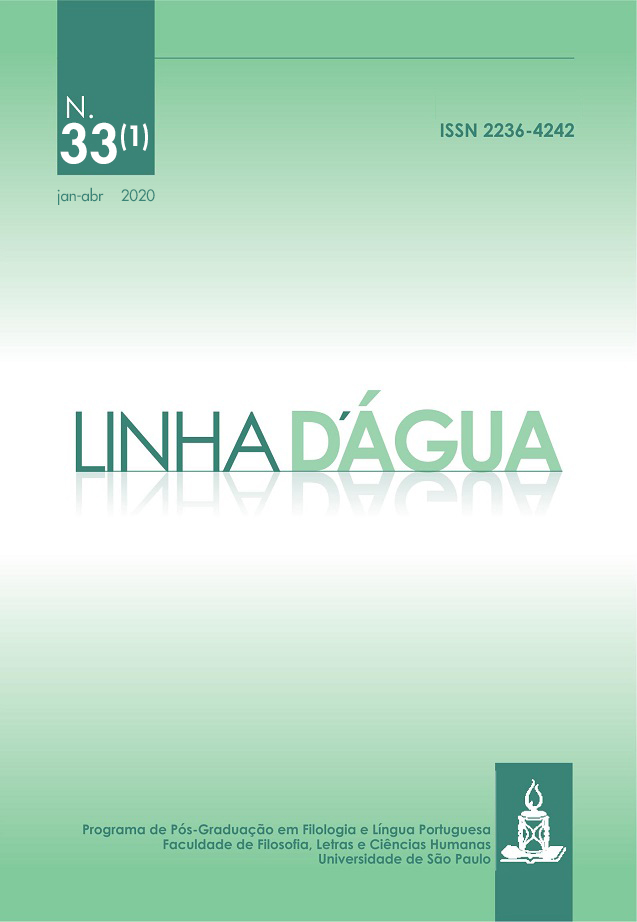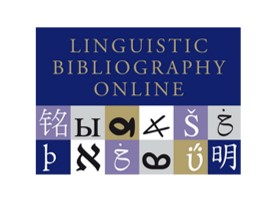O fenômeno da neologia lexical nas eleições de 2018
DOI:
https://doi.org/10.11606/issn.2236-4242.v33i1p129-149Palavras-chave:
neologia, neologismos, inovação lexical, EmpréstimosResumo
Este trabalho apresenta um estudo do fenômeno da neologia lexical através da análise de neologismos produzidos no período das eleições realizadas no Brasil no ano de 2018. Para o delineamento de nossa metodologia, utilizamos os preceitos estabelecidos pelo projeto Observatório de Neologia do Português (ONP), sob a coordenação de Margarita Correia, assim como a sistematização apresentada por Correia e Almeida (2012). Com base nos dados levantados, foram detectados 73 neologismos, sendo 24 formados por derivação (33% do total de palavras novas), 21 por processos deformacionais (28% dos casos), nove por lexicalização, sete por extensão semântica, sete por composição e cinco por empréstimos. Os casos de derivação sufixal servem para corroborar ser a sufixação o mecanismo mais rico e diversificado da língua portuguesa. É nessa classe que encontramos os casos de neologia denominativa, ainda que em sua maioria restritos a nomes de políticos ou a partidos, e não a objetos ou conceitos. Já os neologismos criados por processos deformacionais se destacam por indicarem, em sua grande maioria, casos de neologia estilística, evidenciando a intenção dos usuários em criar tais termos como forma de expressar sua opinião ou sua repulsa a um ou outro candidato.
Downloads
Publicado
Edição
Seção
Licença
Copyright (c) 2020 Linha D'Água

Este trabalho está licenciado sob uma licença Creative Commons Attribution-NonCommercial 4.0 International License.
A aprovação dos manuscritos implica cessão imediata e sem ônus dos direitos de publicação para a Linha D'Água. Os direitos autorais dos artigos publicados pertencem à instituição a qual a revista encontra-se vinculada. Em relação à disponibilidade dos conteúdos, a Linha D'Água adota a Licença Creative Commons, CC BY-NC Atribuição não comercial. Com essa licença é permitido acessar, baixar (download), copiar, imprimir, compartilhar, reutilizar e distribuir os artigos, desde que para uso não comercial e com a citação da fonte, conferindo os devidos créditos autorais à revista.
Nesses casos, em conformidade com a política de acesso livre e universal aos conteúdos, nenhuma permissão é necessária por parte dos autores ou do Editor. Em quaisquer outras situações a reprodução total ou parcial dos artigos da Linha D'Água em outras publicações, por quaisquer meios, para quaisquer outros fins que sejam natureza comercial, está condicionada à autorização por escrito do Editor.
Reproduções parciais de artigos (resumo, abstract, resumen, partes do texto que excedam 500 palavras, tabelas, figuras e outras ilustrações) requerem permissão por escrito dos detentores dos direitos autorais.
Reprodução parcial de outras publicações
Citações com mais de 500 palavras, reprodução de uma ou mais figuras, tabelas ou outras ilustrações devem ter permissão escrita do detentor dos direitos autorais do trabalho original para a reprodução especificada na revista Linha D'Água. A permissão deve ser endereçada ao autor do manuscrito submetido. Os direitos obtidos secundariamente não serão repassados em nenhuma circunstância.
Como Citar
Dados de financiamento
-
Conselho Nacional de Desenvolvimento Científico e Tecnológico
Números do Financiamento 308754/2018-2 -
Fundação de Amparo à Pesquisa do Estado do Rio Grande do Sul
Números do Financiamento 17/2551.0000998-3 -
Fundação de Amparo à Pesquisa do Estado do Rio Grande do Sul
Números do Financiamento 17/2551.0000998-3











